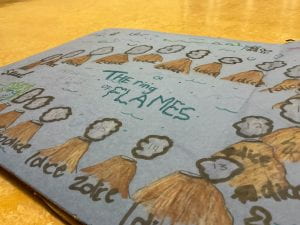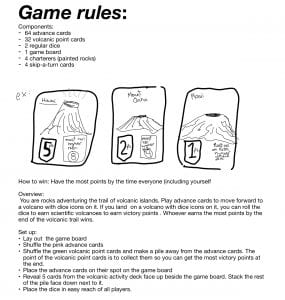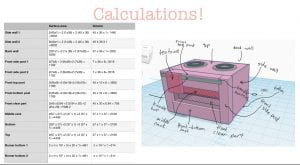 For this project the driving question was “how are thematic and mathematical elements used in game design.” For this project I worked with Kira and Gwenyth. Check out their blogs by clicking their names. The name of the board game was called the ring of flames with was supposed to spark your interest about the game.
For this project the driving question was “how are thematic and mathematical elements used in game design.” For this project I worked with Kira and Gwenyth. Check out their blogs by clicking their names. The name of the board game was called the ring of flames with was supposed to spark your interest about the game.
When we first started brainstorming ideas for our board game we thought we should make a board game called Slug Island about a bunch of slugs stuck on an island, but as we learned more about the board game criteria we decided against slug island.
Here is a mind map I made in the early stages of this project


Obviously these weren’t our formal plans because they are messy and confusing
I teamed up with Kira and Gwen and we worked as a group to create these thoughts

Then it was time to create! I used my artsy skills to write some of the cards and draw the board for the game. Kira and I had lots of fun using the paper cutter to make our cards. Our game pieces were rocks the Kira and I had coloured on and they were very pretty
Here are the final game rules:




Curricular competencies
1. Evaluating: Demonstrate an understanding and appreciation of evidence
I think that we didn’t use enough probability in risking the rolls and that we should try to incorporate more math into it nexts time.
2. Questioning and predicting: Demonstrate a sustained intellectual curiosity about a scientific topic or problem of personal interest
My group did a good job of making really good rules and very detailed cards. We were very fast making our game and we played it a couple of times to make sure it works. We had a lot of fun making our game and we divided all the rolls equally so we all had a good time
3. Understanding and solving: Develop, demonstrate, and apply mathematical understanding through play, inquiry, and problem solving
We spent most of our time planning so our game went very smoothly. Gwen and I spent lots of time on the cards making sure we have numerous different outcomes to keep the game fun and exciting

Thinking about the driving question again “How are thematic and mathematical elements used in game design” I think that the most important elements in a board game are the big thing you are working towards for example: In snakes and ladders the object of the the game is to get to the top, and the other thing is that risk and gamble that you have to make in order to win. Thinking about the driving question again “How are thematic and mathematical elements used in game design”
In conclusion I think that there is a lot of thought that goes into board games and a lot of strategy and so when making a board game remember to keep it fun and risky with lots of probability.
P.S I prefer card games



 For this project the driving question was “how are thematic and mathematical elements used in game design.” For this project I worked with
For this project the driving question was “how are thematic and mathematical elements used in game design.” For this project I worked with 






